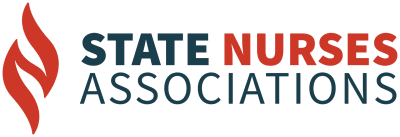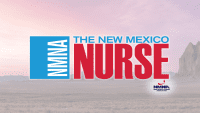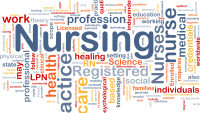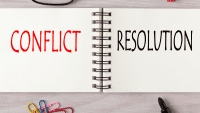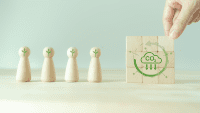I never would have thought it would be like this. I cannot believe this.
These were some of the thoughts that raced through my pounding head at one in the morning. My blood pressure was rapidly coming down after having been dangerously hypertensive for hours. The pain that had me rocking on my hospital bed, head in hands, begging for it to stop was slowly abating. Nurses were pushing my bed from a women’s specialty care unit to the Labor and Delivery unit with urgency, whispering questions of whether induction was safe or if it was necessary for an emergency Cesarean section. Starting a Magnesium Sulfate infusion was one of their first priorities—there was great concern about potential seizures. I was afraid.
I had entered my pregnancy healthy. At twenty-nine, I was fit with no significant medical history. As an intensive care nurse who had just started her DNP program, I would never have suspected that I would develop preeclampsia. When my blood pressure started to become elevated, I assumed it was just stress. Then the headaches that would not go away started, followed by the vision changes. The diagnosis was no longer avoidable. As much as the diagnosis was a surprise, I could not ig-nore it. I realized the inevitability of induction and the potential consequences of a premature delivery for my baby. I was frustrated with the orders for bedrest; I felt claustrophobic in the narrow bed, strapped as I was to infusions and monitors. And I was afraid.
Then I met my nurse.
Instantly, I liked her. She was warm and personable. When she spoke to me, she would pull up a stool and talk to me, eye to eye. It was this nurse who explained to me what an induction entailed, why they were putting me on Magnesium Sulfate, what medications they were giving me, and why. It was this nurse who saw the tears welling in my eyes as my anxiety was building, stopped what she was doing, and held my hand. It was this nurse who brushed and braided my hair when I could not, making me feel a little more human. She advocated for me when I could barely keep my thoughts straight due to nights without sleep. It was this nurse that gave me the encouragement that got me through the laboring process.
It was a nurse who made all the difference.
It is a nurse who remains at the dying patient’s bedside, holding his hand, administering pain medicine, and offering comfort to the grieving family. It is a nurse who meticulously titrates the life-saving medications throughout the shift, and who remains vigilant during the long shift so that these medications never run dry. It is the nurse who bathes and toilets patients in such a way that their dignity is left intact, never stripping the patient of their humanity. It is the nurse who holds out hope for healing as their patient faces another round of chemotherapy. It is a nurse who educates, encourages, and explains when the doctors have long moved on to their next patient. It is the nurse who soothes the crying baby when his mother has left the NICU for the night. It is often the nurse’s assessment that first alerts the doctor that a patient’s status is changing. Nurses administer the medications. They dress the wounds. They mobilize and turn their patients to prevent injuries. They are the heartbeat that keeps the healthcare world running.
According to the American Association of Colleges of Nursing (AACN), nurses make up the largest percentage of workers in the healthcare field (Rosseter, 2023). Working in schools, homes, hospitals, nursing homes, rehabilitation facilities, and businesses, nurses are an ever-present, visible force. In 2020, The Year of the Nurse, we proved our resilience, ingenuity, and strength. We showed the world that we would not back down from a challenge- not when we were understaffed, not when we did not have enough protective gear, and not when we were anxious about our safety. Our track record speaks for itself—22 years of being voted the number one trusted profession by a national Gallup poll (Brennan & Jones, 2024). We can stand proud, knowing we provide a necessary service that greatly benefits society. Our profession is one that is the perfect marriage between science and compassion; we walk daily into patients’ rooms and impact their lives.
Looking to the future, we know we are still facing challenges. As a collective we need to be willing to welcome new nurses into our ranks, eager to help them succeed. We need to be advocates, not just for our patients, but for ourselves. Being aware of and involved in the legislative process can give us a voice and a chance to better our profession. Finding the space to breathe and rest will refresh us for the shifts ahead, allowing us to be better nurses for our patients and coworkers. It is by nurses banding together, supporting each other, and encouraging each other that we can tackle these challenges. Together we can build a better future for our patients and ourselves.
As we are celebrating Nurses’ Week, please know that your efforts do not go unnoticed. Your compassion is not wasted. Your skills and knowledge are appreciated. You are making the difference.
“The nurse is temporarily the consciousness of the unconscious, the love of life for the suicidal, the leg of the amputee, the eyes of the newly blind, a means of locomotion for the infant, the knowledge and confidence of the young mother, and a voice for those too weak to speak.” – Virginia Henderson
References
Brennan, M. & Jones, J. (2024). Ethics ratings of nearly all professions down in U.S. Gallup. Retrieved April 01, 2024, from https://news.gallup.com/poll/608903/ethics-ratings-nearly-professions-down.aspx#xd_co_f=NmY1MGQ3ZDQtMzk0OC00ZWMyLWEzYTgtM2UyOThhOTA4MzYz~
Henderson, V. (1978). The concept of nursing*. Journal of Advanced Nursing, 3(2), 113–130. https://doi.org/10.1111/j.1365-2648.1978.tb00837.x
Rosseter, R. (2023). Nursing workforce fact sheet. AACN. Retrieved April 03, 2024, from https://www.aacnnursing.org/news-data/fact-sheets/nursing-workforce-fact-sheet
